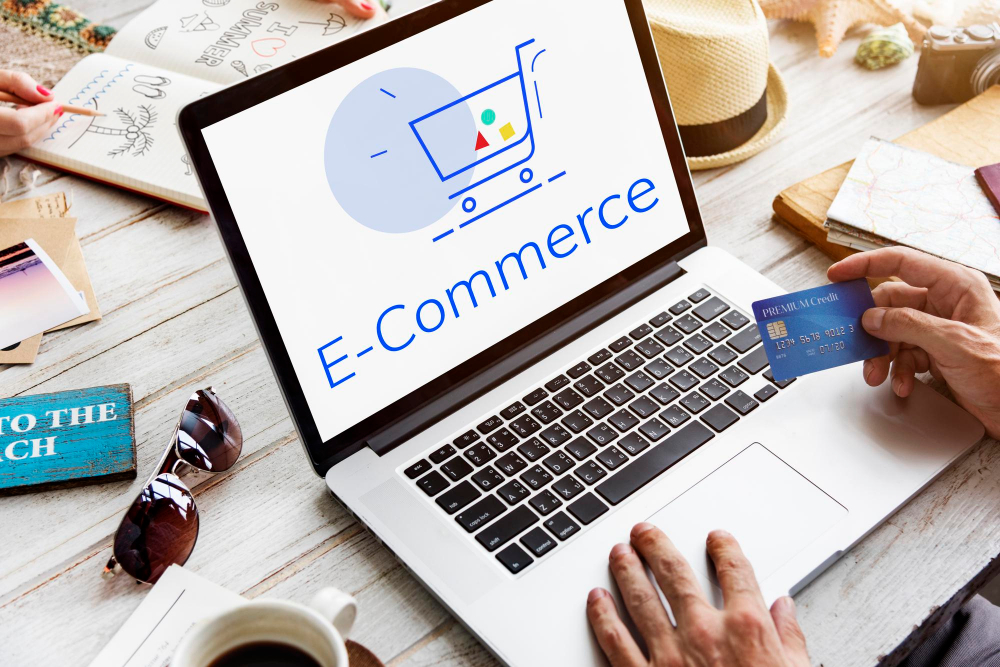Building an e-commerce business might seem overwhelming, but breaking it down into manageable steps makes the process straightforward. Here’s everything you need to know to setting up your e-commerce website and make it a successful business.
The foundation of your online store starts with selecting the right e-commerce platform. Shopify dominates the market for good reason: it’s user-friendly, handles hosting, and includes essential features like payment processing and inventory management. For those wanting more control, WooCommerce offers flexibility but requires WordPress knowledge and separate hosting. Consider your technical skills, budget, and growth plans. Beginners should lean toward hosted solutions like Shopify or BigCommerce, while experienced developers might prefer the customization options of Magento or custom-built solutions. Your domain name becomes your digital address, so choose wisely. Keep it short, memorable, and related to your business. Avoid hyphens or numbers that confuse customers. Purchase the .com version whenever possible, as it’s the most trusted extension. Your website design directly impacts sales. Clean, professional layouts build trust, while cluttered designs drive customers away. Use plenty of white space, maintain consistent branding, and ensure your site looks professional on both desktop and mobile devices. At the same time, mobile optimization isn’t optional. Over 54% of e-commerce traffic comes from mobile devices. Test your site on various screen sizes and ensure buttons are easily clickable, text is readable, and the checkout process works smoothly on smartphones. Certain pages are non-negotiable for e-commerce success. Your product pages need high-quality images, detailed descriptions, and clear pricing. Include multiple product photos from different angles, and consider adding videos that demonstrate product use. Create comprehensive policies covering shipping, returns, and privacy. These pages build customer confidence and reduce support inquiries. An “About Us” page humanizes your brand and helps customers connect with your story. Payment processing can make or break sales. Offer multiple payment options including credit cards, PayPal, and digital wallets like Apple Pay. SSL certificates are mandatory. They encrypt customer data and display trust badges that reassure buyers. Shipping configuration requires careful thought. Research your competitors’ shipping rates and delivery times. Many customers expect free shipping, so consider building shipping costs into product prices rather than charging separately. Clearly communicate delivery timeframes and tracking information. Online security protects both your business and customers. Start with SSL certificates, use strong passwords, and keep your platform updated. Enable two-factor authentication on all admin accounts and regularly back up your site. Display security badges prominently during checkout. Trust seals from Norton, McAfee, or your payment processor increase conversion rates by reducing customer anxiety about sharing personal information. Search engine optimization helps customers find your products. Research keywords your target audience uses and incorporate them naturally into product titles, descriptions, and meta tags. Create unique, detailed product descriptions rather than copying manufacturer text. Technical SEO matters too. Ensure your site loads quickly, uses proper heading structures, and includes alt text for images. Submit your sitemap to Google Search Console and monitor your site’s performance regularly. Thorough testing prevents embarrassing mistakes and lost sales. Place test orders using different payment methods and shipping options. Check that confirmation emails arrive promptly and contain accurate information. Test your site on multiple browsers and devices. Have friends and family navigate your site and provide feedback on the user experience. Fix any broken links, spelling errors, or functionality issues before going live. A soft launch lets you work out final kinks before your grand opening. Start by inviting friends, family, and email subscribers to explore your new store. Their feedback helps identify issues you might have missed. Many businesses find that partnering with professional e-commerce development services in Somerset, UK, during the launch phase ensures all technical aspects are properly configured and tested. That is why you must prepare your marketing materials in advance. Set up social media accounts, create email campaigns, and consider paid advertising to drive initial traffic. Having inventory, customer service processes, and fulfillment systems ready ensures you can handle orders from day one. Launching is just the beginning. Use analytics tools to track visitor behavior, conversion rates, and popular products. Google Analytics and your platform’s built-in analytics provide valuable insights into customer preferences and site performance. Continuously test and improve elements like product descriptions, checkout flow, and site navigation. Small improvements compound over time, leading to significant increases in sales and customer satisfaction. Setting up an e-commerce website requires attention to detail, but following these steps creates a solid foundation for online success. Focus on providing excellent customer experience, and your technical investment will pay dividends through increased sales and customer loyalty. Moiz Banoori is a seasoned Digital Marketing professional with over eight years of expertise in content creation and digital journalism. At REDLUMB, he spearheads teams to craft impactful SEO strategies that drive online growth and visibility. With a background in journalism, Moiz leverages his expertise in digital marketing to develop effective strategies that boost online visibility and help clients achieve their goals.

Choose The Right Platform
Secure Your Domain & Hosting
Design For Conversion
Set Up Essential Pages
Configure Payment & Shipping
Implement Security Measures
Optimize For Search Engines
Test Everything Before Launch
Plan Your Launch Strategy

Monitor And Optimize





